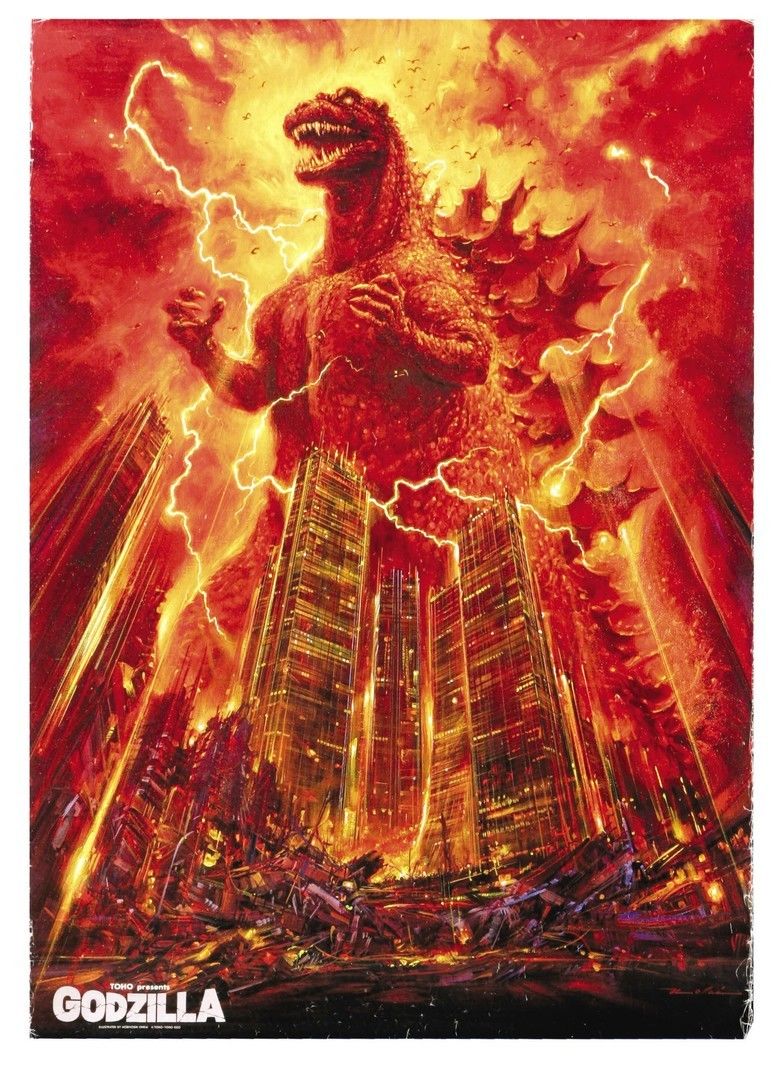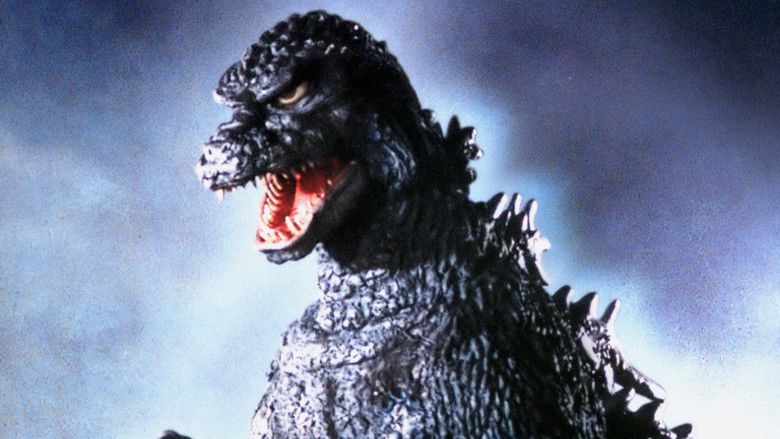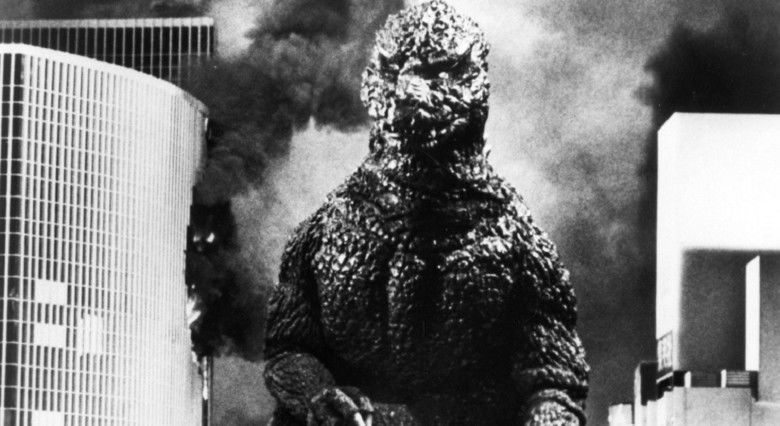Godzilla 1985
6.2 /10 1 Votes
Film series Godzilla Duration | 6/10 IMDb Genre Action, Horror, Sci-Fi Country JapanUnited States | |||||||||||||||||||||||||||||||||
 | ||||||||||||||||||||||||||||||||||
Language EnglishJapaneseRussian Release date August 23, 1985 (1985-08-23) Writer Hideichi Nagahara, Tomoyuki Tanaka (story), Lisa Tomei (english version), Straw Weisman (US version) Producers Kiyomi Kanazawa, Norio Hayashi Cast (Goro Maki), (Naoko Okumura), (Prime Minister Mitamura), Shin Takuma (Hiroshi Okumura), Eitarô Ozawa (Finance Minister Kanzaki), Taketoshi Naitô (Takegami, Chief Cabinet Secretary)Similar movies Mothra vs. Godzilla , Invasion of Astro-Monster , King Kong vs. Godzilla , Gorath , Independence Day , Godzilla Tagline The Legend Is Reborn. | ||||||||||||||||||||||||||||||||||
Godzilla 1985 clip 1
Godzilla 1985 is a 1985 Japanese-American science-fiction kaiju film co-directed by R.J. Kizer and Koji Hashimoto. The film is a heavily re-edited American adaptation of the Japanese film The Return of Godzilla produced by Toho in 1984. In addition to the film being re-cut, re-titled, and dubbed in English, Godzilla 1985 featured additional footage produced by New World Pictures.
Contents
- Godzilla 1985 clip 1
- Brandon s cult movie reviews godzilla 1985
- Plot
- Cast
- Production
- Changes
- Box office
- Critical reception
- Awards
- Home video
- References

Both the New World Pictures and Toho versions of the film serve as direct sequels to the original Godzilla film. However, while Toho's version serves as a sequel to the original 1954 Godzilla film, Godzilla 1985 serves as a sequel to Godzilla, King of the Monsters!, the 1956 Americanization of the original film which also starred Raymond Burr. Godzilla 1985 uses the same techniques used in Godzilla, King of The Monsters where the original Japanese footage is dubbed and edited together with the American footage. In addition to keeping Reijiro Koroku's original score, the film uses cues from Christopher Young's Def-Con 4 film score.

The film was met with mainly unfavorable reviews upon its release in the United States. Just like Godzilla, King of The Monsters, a majority of the nuclear themes and political overtones featured in the Japanese original were removed from the North American version. Godzilla 1985 was the last Godzilla film to be distributed theatrically in the United States until the release of Godzilla 2000.

Godzilla 1985 also hasn't been released in DVD or Blu-ray by Kraken Releasing, which it only included its original Japanese version known as The Return of Godzilla and its international dub of The Return of Godzilla. Also, all of the other American releases of the other Godzilla films were released on DVD, making Godzilla 1985 the only American version of the film that has been released on VHS, but hasn't been released on DVD yet.

Brandon s cult movie reviews godzilla 1985
Plot
The Japanese fishing vessel Yahata Maru is trying to find its way to shore in a horrible storm while near an uninhabited island, when a giant monster appears out of the island and attacks the boat. A day later, reporter Goro Maki finds the vessel intact, along with its sole survivor Hiroshi "Kenny" Okumura.
In Tokyo, the Japanese Prime Minister is informed of the attack and the potential return of Godzilla orders that Godzilla's involvement be kept secret. Maki's report is not published by his newspaper as a "national security matter" over concerns about mass panic and is told to go talk to Goto. Goto informs him their hands are tied as it is related to his article but not to abandon it, instead seek out bio-physicist Hayashida instead. Maki finds Naoko, Okamura's sister working as a lab assistant to Hayashida and informs her that her brother is safe, against the government's orders. She rushes to the hospital.
Godzilla attacks a second time and destroys a Soviet submarine. At the Pentagon, General Goodhoe is informed of the attack on the Soviet submarine. The Russians believe the attack was orchestrated by the Americans and the situation threatens to escalate into war. In Tokyo, the Prime Minister is informed of the submarine attack and is shown evidence that Godzilla was responsible. The media blackout is lifted and the Americans are absolved of blame. The Japanese arrange a meeting with the Russian and American ambassadors and, after some debate over the issue, Prime Minister Mitamura decides nuclear weapons will not be allowed in Japanese territory even if Godzilla was to attack the Japanese mainland. The Soviets keep the nuclear option open despite Japan's forbidding it.
Soon, Godzilla appears on an island off the coast of Japan and attacks a nuclear power plant. After removing the nuclear reactor and feeding off the radiation, Godzilla suddenly drops the reactor and walks off after a flock of birds pass by. The Japanese Self-Defence Forces deploy their forces in wait for a possible attack by Godzilla at Tokyo Bay. General Kakura of the JSDF briefs the Japanese cabinet about a top-secret weapon known as "Super-X attack plane" that can be used against Godzilla. A special heat-resistant and armoured plane, Super-X is a last-ditch weapon to defend the capital.
Through the use of "ultrasonic images", Hayashida determines that Godzilla's brain is bird-like, only mutated. Hayashida realizes that Godzilla has a conditioned response to birds chirping and suggests that they could duplicate the sound electronically and Godzilla might follow. Hayashida assists the Japanese emergency task force in a plan to coax Godzilla into Mt. Mihara's volcano by emitting the bird sound frequency in the hope Godzilla will follow it into the volcano. The Prime Minister authorizes both the JSDF plan and the plan to use the volcano against Godzilla.
Steve Martin is brought into the Pentagon to assist the Americans against Godzilla. Godzilla is later sighted at Tokyo Bay, forcing mass evacuations out of the city. The JASDF attack Godzilla but to no avail. A Russian ship disguised as a merchant ship launch a nuclear missile via satellite. Godzilla proceeds to attack Tokyo and the JSDF launch the Super-X.
The Pentagon prepares to assist the Japanese but Martin cautions that weapons will only confuse and antagonize Godzilla further. Hayashida uses the bird signaling device on Godzilla, which works initially, but fails when Godzilla is attacked. The Super-X arrives shortly and defeats Godzilla with cadmium missiles. The Americans believe that Godzilla is dead, but Martin is not sure. At that moment, the Soviet missile is detected by the Americans as it draws closer to Japan.
Hayashida and his signalling equipment is evacuated and sent to Mt. Mihara. The Americans launch a counter-missile and successfully intercept the Soviet missile however, the nuclear atmosphere from the blast reawakens Godzilla and continues its battle with the Super-X until it is destroyed. Hayashida relaunches the signal and lures Godzilla into the mouth of Mt. Mihara. Using explosive bombs to cause the mountain to erupt, Godzilla becomes imprisoned after falling into the volcano.
Cast
Production
In early 1985, the trade papers reported that Toho was asking several million dollars for the North American distribution rights, and that discussions had taken place with MGM/United Artists and other studios. At one point, a Toho spokesman complained that the best offer ponied up (by an unnamed Hollywood studio) was in the $2 million range. It is doubtful that he was telling the truth, for the bidding war, such as it was, didn't last long, and Toho wound up getting far less money. By May, the new Godzilla movie had been passed over by the majors and fallen instead into the hands of New World Pictures, the modern-day equivalent of the kind of low-budget, exploitation movie producers and distributors that gobbled up Godzilla movies.
After acquiring The Return of Godzilla for distribution in North America, New World Pictures changed the title to Godzilla 1985 and radically re-edited the film. Originally, New World reportedly planned to re-write the dialogue in order to turn the film into a tongue-in-cheek comedy (à la What's Up, Tiger Lily?), but this plan was reportedly scrapped because Raymond Burr expressed displeasure at the idea, taking the idea of Godzilla as a nuclear metaphor seriously. The only dialogue left over from that script was "That's quite an urban renewal program they've got going on over there," said by Major McDonahue.
All of Burr's scenes were filmed in one day to suit his schedule. He was paid US $50,000. The reverse shots, of the actors he was speaking to, were filmed the next day, and the American filming was completed in three days. The filming was done at the Raleigh Studios in Los Angeles. The "war room" was a large montage of the war room from The Philadelphia Experiment, another film from the same studio.
New World's biggest change was in adding around ten minutes of new footage, most of it at The Pentagon, with Raymond Burr reprising his role as Steve Martin from Godzilla, King of the Monsters!.
The poster image was the same as for the Japanese version, but a green tinting was added to Godzilla's charcoal gray skin and the Soviet attack satellite in the upper right corner was removed.
Changes
New World's changes were not limited to these scenes. Much of the original version was deleted or altered. A partial list of the changes:
The most controversial change was the scene where the Russian freighter officer Colonel Kashirin valiantly attempts to stop the launch of a nuclear weapon. New World edited the scene (and added a brief shot of Kashirin pressing the launch button) so that now Kashirin deliberately launches the nuclear weapon; possibly due to the fact that the Cold War was ongoing during the release of the film.
In addition, the theatrical release (and most home video versions) was accompanied by Marv Newland's short cartoon, Bambi Meets Godzilla.
The North American version, with the added Raymond Burr footage, runs 87 minutes, 16 minutes shorter than the Japanese version.
The closing narration, spoken by Raymond Burr, is as follows:
Nature has a way sometimes of reminding man of just how small he is. She occasionally throws up the terrible offspring of our pride and carelessness to remind us of how puny we really are in the face of a tornado, an earthquake or a Godzilla. The reckless ambitions of man are often dwarfed by their dangerous consequences. For now, Godzilla—that strangely innocent and tragic monster—has gone to earth. Whether he returns or not or is never again seen by human eyes, the things he has taught us remain.
Box office
Opening on August 23, 1985, in 235 North American theaters, the film grossed $509,502 USD ($2,168 per screen) in its opening weekend, on its way to a $4,116,395 total gross.
New World's budget breakdown for Godzilla 1985 is as follows: $500,000 to lease the film from Toho, $200,000 for filming the new scenes and other revisions, and $2,500,000 for prints and advertising, adding up to a grand total of approximately $3,200,000. Over time, Godzilla 1985, though not a hit, was partially profitable for New World only with the addition of home video and television syndication (the film debuted on television on May 16, 1986).
It was the last Godzilla film produced by Toho to receive any major release in North American theaters until Godzilla 2000 fifteen years later.
Critical reception
Godzilla 1985 was almost universally criticized by North American critics. Roger Ebert, who gave the film a mere one star in the Chicago Sun-Times, wrote:
"The filmmakers must have known that the original Godzilla (1956) had many loyal fans all over the world who treasured the absurd dialogue, the bad lip-synching, the unbelievable special effects, the phony profundity. So they have deliberately gone after the same inept feeling in Godzilla 1985. Examples: Dialogue: It is so consistently bad that the entire screenplay could be submitted as an example. My favorite moment occurs when the hero and heroine are clutching each other on a top floor of a skyscraper being torn apart by Godzilla and the professor leaps into the shot, says "What has happened here?" and leaps out again without waiting for an answer. Lip-synching: Especially in the opening shots, there seems to be a subtle effort to exaggerate the bad coordination between what we see and what we hear. All lip-synch is a little off, of course, but this movie seems to be going for condescending laughs from knowledgable filmgoers. Special effects: When Godzilla marches on Tokyo, the buildings are the usual fake miniature models, made out of paint and cardboard. The tipoff is when he rips a wall off a high-rise, and nothing falls out. That's because there is nothing inside."
Ebert kept a copy of the poster in his office for many years and it was clearly visible in the opening of his television program.
Vincent Canby of the New York Times was similarly unimpressed:
"Though special-effects experts in Japan and around the world have vastly improved their craft in the last 30 years, you wouldn't know it from this film. Godzilla, who is supposed to be about 240 feet tall, still looks like a wind-up toy, one that moves like an arthritic toddler with a fondness for walking through teeny-tiny skyscrapers instead of mud puddles. Godzilla 1985 was shot in color but its sensibility is that of the black-and-white Godzilla films of the 1950s. What small story there is contains a chaste romance and lots of references to the lessons to be learned from "this strangely innocent but tragic creature." The point seems to be that Godzilla, being a "living nuclear bomb", something that cannot be destroyed, must rise up from time to time to remind us of the precariousness of our existence. One can learn the same lesson almost any day on almost any New York street corner."
One of the few positive reviews came from Joel Siegel of Good Morning America, who is quoted on New World's newspaper ads as saying, "Hysterical fun...the best Godzilla in thirty years!".
Awards
The movie was nominated for a Stinkers Bad Movie Award for Worst Picture and also nominated for two Razzie Awards including Worst Supporting Actor for Raymond Burr and Worst New Star for the new computerized Godzilla.
Home video
Godzilla 1985 has been released on home video several times in the U.S. The first release was by New World in the mid '80s, another by Starmaker video (who had acquired some of New World's library) in 1992, and again by Anchor Bay in 1997. All home video releases include the Bambi Meets Godzilla animated short with the exception of the Starmaker release. Despite Godzilla 1985 being released several times in VHS, the film never received a DVD or Blu-ray release, which its American DVD or Blu-ray only has its original JP Version, The Return of Godzilla, and its international dub of The Return of Godzilla.
References
Godzilla 1985 WikipediaGodzilla 1985 IMDb Godzilla 1985 themoviedb.org
